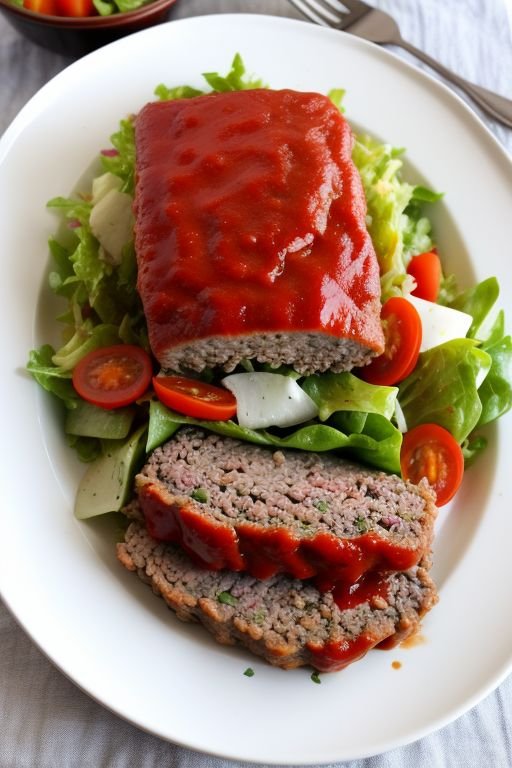Introduction to the Article on « What is the Slang Meatloaf? »
In today’s shifting language scene, slang plays a playful yet profound role, altering our daily communication. Traditionally a hearty dish, the term ‘Meatloaf’ has also become slang. What does it mean in this context? This article unravels the complex language web to explore the slang ‘Meatloaf’. We’ll examine its origins, cultural significance, and unique usage. From its beginnings to its role in modern talk, we see how ‘Meatloaf’ spices up our everyday speech.
Introduction to Slang and Its Impact on Language
Slang terms are the spices of language; they add flavor, color, and personality, making conversations vibrant and relatable. The term ‘Meatloaf’ serves as a perfect example of how everyday language is peppered with such expressions, making interactions uniquely human and culturally resonant.
Understanding slang in modern language
Slang functions as a social tool that fosters a sense of identity and community among its users. It’s dynamic, evolving with the times and often reflecting societal changes or attitudes. Incorporating terms like ‘Meatloaf’ into everyday jargon illustrates not only creativity in language use but also an adaptive linguistic practice that mirrors contemporary life.
Brief overview of the term « Meatloaf » as slang
- The slang « What is the slang meatloaf? » might confuse those not familiar with its context.
- Unlike the dish, in slang, ‘Meatloaf’ changes meaning based on the conversation, showing slang’s flexibility.
- This term can vary in dialogue, from a playful insult to a term of endearment, highlighting words as cultural symbols.
- Transitioning deeper, understanding ‘Meatloaf’ in slang isn’t just about decoding a word.
- It’s about appreciating its role in language as a dynamic and living entity.
- As we explore further, the nuances of ‘Meatloaf’ and its communication impact show the intricate mix of language, culture, and identity.
Understanding ‘Meatloaf’ in Slang
In the colorful world of slang, terms like ‘Meatloaf’ are not just words but cultural artifacts, reflecting the quirks and idiosyncrasies of the communities that use them. This section explores the various dimensions and regional nuances of ‘Meatloaf’ as slang.
Different contexts and uses of ‘Meatloaf’
The question « What is the slang meatloaf? » opens a window into how a single word can wear many hats. In some circles, ‘Meatloaf’ might be a humorous nod to someone who is seen as dependable yet somewhat unexciting, akin to the reliable but mundane dish itself. Elsewhere, it could be a lighthearted way to describe situations that are mixed or muddled—much like the ingredients of its namesake.
Regional variations if any
Slang does not exist in a vacuum; it is deeply entrenched in the soil of local culture and dialect. The term ‘Meatloaf’ may carry specific connotations in different regions, altered by local dialects and cultural contexts. For instance, in one area, ‘Meatloaf’ might be a common term among friends in a teasing, affectionate manner, while in another, it could be virtually unknown as slang.
Exploring the usage of ‘Meatloaf’ across various locales not only enriches our understanding of the term but also highlights the diverse tapestry of language use. As we peel back these layers, « What is the slang meatloaf? » becomes more than a query—it’s a gateway to discovering the dynamic nature of colloquial speech and its ability to connect us in unexpectedly humorous and heartfelt ways.
Historical and Cultural Context
The slang term ‘Meatloaf’ did not just appear out of thin air; it has a backstory enriched with historical and cultural textures. This section delves into the origins and evolutionary journey of ‘Meatloaf’ within the slang lexicon.
Historical origins of the term
Tracing the lineage of a slang term like ‘Meatloaf’ can be akin to culinary detective work. It’s about understanding when and where the term first seasoned conversations. Historically, the term may have originated from the simple, unpretentious nature of its culinary counterpart, symbolizing something or someone ordinary and unremarkable. Over time, « What is the slang meatloaf? » evolved into a multifaceted expression reflecting more than just the ordinary.
Cultural impact and acceptance
Slang terms often gain traction through media, literature, or popular culture, and ‘Meatloaf’ is no exception. It may have percolated through cultural channels, becoming more recognized and accepted within certain communities. The adoption of ‘Meatloaf’ in various forms of media, such as films, music, and television, could have played a pivotal role in cementing its place in the slang dictionary.
This exploration of ‘Meatloaf’ not only enriches our linguistic repertoire but also offers a mirror to view our societal shifts and trends. Understanding the historical and cultural journey of slang terms like ‘Meatloaf’ allows us to appreciate the nuanced ways in which language evolves and adapts, echoing the changing landscapes of human culture and interaction.
Comparative Analysis
- Slang terms exist in a web of meanings, where one term illuminates another.
- In this section, we compare ‘Meatloaf’ to other food-related slang, exploring wider implications.
Comparison with other food-related slang
- Food terms are common in slang’s pantry. For example, « couch potato » and « big cheese » use vivid imagery to describe traits, similar to ‘Meatloaf.’
- Examining « What is the slang meatloaf? » next to these terms shows a shared linguistic method: turning everyday items into metaphorical meanings.
Broader implications in language
- Using ‘Meatloaf’ and other food slang shows our tendency to use tangible concepts for abstract ideas or behaviors.
- This makes language more relatable and digestible, reflecting our desire to connect through shared cultural experiences.
- By comparing ‘Meatloaf’ with other culinary slang, we uncover the creative processes that shape language.
- This analysis not only enhances our understanding of specific terms but also reveals how slang enriches our daily conversations.



1 réflexion au sujet de « What is the Slang Meatloaf? »